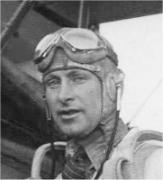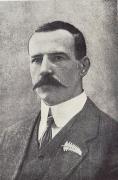|
|
||||||||||||||||||||||||
 |
Featured person
Recently added |
John Joseph Gilmore (1900 - 1945): |
||||||||||||||||||||||

|
Joseph (Joe) Gilmore, son of Patrick and Elizabeth (Crangle) Gilmore, was born on 22 June 1900 in 31 Lowry Street in east Belfast. The street, which was off Stanhope Street, no longer exists.
When quite young he went to live with his maternal grandmother in Ardtole near Ardglass. It was there that he went to school, completing his education in Downpatrick Technical College. He was by all accounts energetic and fearless. He played football for Ardtole GAA and for the Down Senior Team. Gilmore worked for a while in Cleland's garage at the bottom of Hill St in Ardglass. The building is now used as a store. He eventually set up his own garage in the dock area.
In 1929 Gilmore joined the Irish Free State Army Air Force in Dublin as a civil engineer. He gained his pilot's license (No 23) on 17 November 1932. On 17 April 1933 at Baldonnell Airport, from a height of 2,500 feet, he became the first Irishman to parachute from an aircraft and land on Irish soil. In all he made a total of 15 parachute descents.
In 1933 Gilmore joined Imperial Airways initially at Croydon Airport as an Aircraft Engineer. Promoted Station Engineer he served at Ronaldsway Airport in the Isle of Man and at Poole in Dorset. In 1938 he was transferred to Atlantic Division and sent to Montreal, Quebec in connection with North Atlantic flights, and participated in the preparation of Marine Base, Boucherville, Quebec and in aircraft servicing at Port Washington New York.
In August 1940 Gilmore was transferred to Gander in Newfoundland where he became the first employee of the new Canadian Pacific Air Service department set up to deliver aircraft to Britain to assist the war effort. In 1941 his transfer became permanent when the operation was taken over by the RAF Ferry (later 'Transport') Command. Gilmore was the Superintendent of Maintenance involved in the preparation of the aircraft for the long Trans-Atlantic flights. He personally flew with many of these aircraft to Britain. Over the course of the war more than 9,000 planes were ferried over the Atlantic and made a major contribution to the Allied victory.
During his time in Gander Gilmore was also involved in salvaging crashed aircraft and returning them to service. In addition to his official duties Gilmore flew many rescue missions, many of them extremely hazardous given the nature of the weather and terrain in that part of the world. It is estimated that of over 500 such missions during his time there Gilmore undertook more than half. On a flight from Gander to Montreal, Quebec on 1 May 1945 the Norseman plane usually used in air sea rescue that he was piloting crashed in foggy conditions near Peake's Station, Prince Edward Island and both he and his passenger were killed.
Gilmore has an impressive record of inventions to his credit. He designed and fitted the air intake shutters and the carburettor alcohol de-icing on the first Lockheed Hudsons to fly the Atlantic and the designs were taken up more widely. He designed a fuel dump system that was eventually used on BOAC Ferry B-24 aircraft and widely utilised.
Gilmore had a colourful career, apart from his profession. In July 1923 he was arrested in the course of helping a wounded IRA prisoner to escape to the Irish Free State and spent some time in custody. In 1933 he purchased a high wing monoplane, the first of its kind, in East Lincolnshire and crashed it on the way home. He stored it on a local farm and having retrieved the wreckage some time later proceeded to rebuild it, using various spare parts and making his own where none were available. The plane received an official registration that was not cancelled until 1949 when it was noted 'owner deceased'. There are many tales told of his exploits in the plane, which he also used to take aerial photographs. The plane was eventually written off after several more crashes.
For his part in the war effort Gilmore posthumously received the award of an MBE in the 1946 Birthday Honours List. He is the only civilian buried in the Commonwealth War Graves Cemetery in Gander.
| Born: | 22 June 1900 |
| Died: | 1 May 1945 |
| Patrick Devlin |


Home | Our Policies | Plaques | Browse | Search | Sponsors | Links | Help | Contact
Privacy & Disclaimer | Cookie Policy | Site Map | Website Design By K-Point
© 2024 Ulster History Circle









